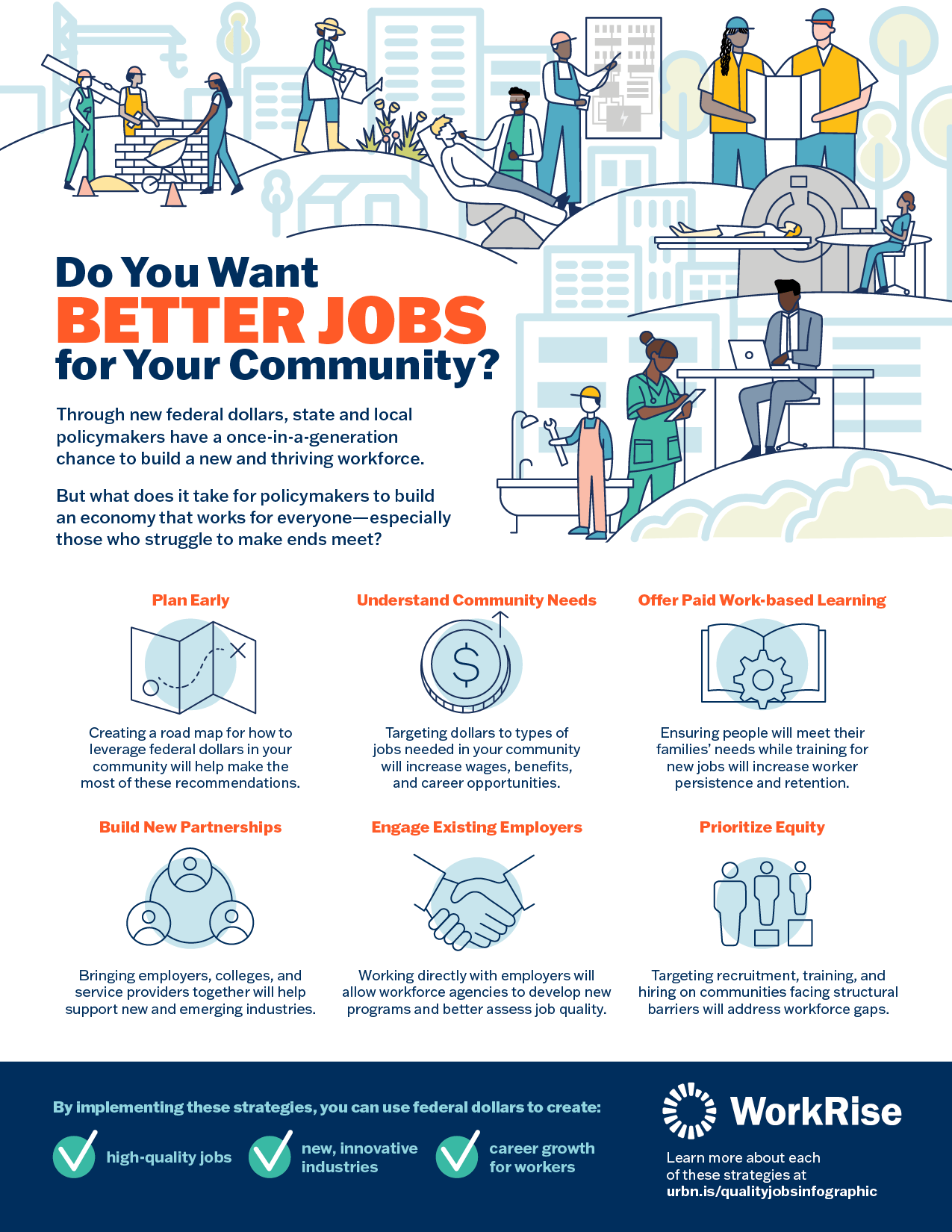
The federal government has recently made large investments in communities across the nation, which state and local areas can leverage to benefit workers. Federal funds flowing from a number of programs offer communities an opportunity to invest in their workforces. These programs include American Rescue Plan initiatives, such as the Build Back Better Regional Challenge, the Good Jobs Challenge, and the flexible State and Local Fiscal Recovery funds; the Infrastructure Investment and Jobs Act (IIJA); and the CHIPS act.
Below, we provide a checklist with resources that offer state and local policymakers a guide for how to invest these dollars to improve worker opportunities, especially for those historically underserved, and to meet employer demand for skilled labor. Sources for further reading are after each point.
1. Plan Early
Planning for the Infrastructure Investment and Jobs Act funds (White House)
Leveraging outstanding Infrastructure Investment and Jobs Act funds (Local Infrastructure Hub)
Applying for the Building Pathways to Infrastructure Jobs Grant Program (National League of Cities)
Harnessing the Infrastructure Investment and Jobs Act funds (Brookings Institute)
Using CHIPS funds for workforce development (National Institute for Standards and Technology)
2. Understand Community Needs
Investing in better training can lead to better jobs (Center for American Progress)
Strengthening support for local workforce systems (Urban Institute)
3. Offer Paid Work-based Learning
Supporting work-based learning at community colleges (Urban Institute)
Building youth apprenticeship programs (Urban Institute)
Investing in apprenticeships to support higher earnings (Urban Institute)
Understanding public-sector apprenticeships to improve workforce development (Urban Institute)
Applying family-centered approaches to workforce development (Urban Institute)
Supporting student-parent families through policy and practice (Urban Institute)
4. Build New Partnerships
Reimagining employer and community college partnerships (Urban Institute)
Building local healthcare workforce pathways through employer partnerships (Urban Institute)
Creating effective regional workforce collaboratives (National Fund for Workforce Solutions)
5. Engage Existing Employers
Engaging employers through workforce agencies (Urban Institute)
Engaging employers through community colleges (Federal Reserve Bank of New York)
6. Prioritize Equity
Exploring racial economic equity in workforce programs (Prosperity Now)
Creating a more equitable workforce system (National Governor’s Association)
Advancing workforce equity (National Fund for Workforce Solutions)
Improving public workforce development, equity, and job quality (Center for American Progress)